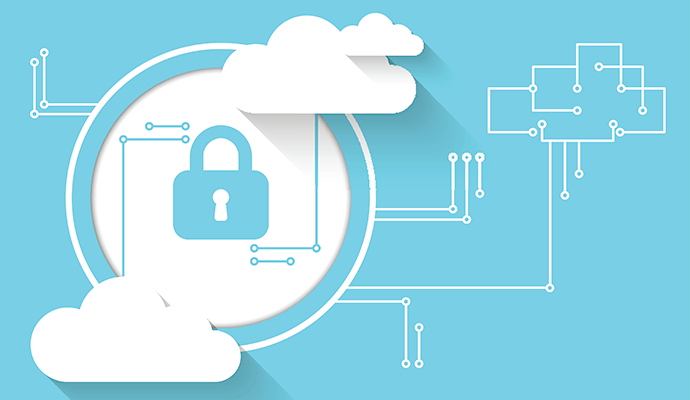Cyberattacks Drive Multi-Cloud Security Solution Market Growth
More stringent regulatory standards and increased cyber threats are driving multi-cloud security solution adoption, Research and Markets reported.

Source: Getty Images
- Cloud adoption continues to grow rapidly across numerous sectors as organizations further prioritize digital transformation, scalability, and security. Healthcare organizations in particular are increasingly recognizing the benefits of public, private, hybrid, and multi-cloud architectures.
In its newly released report, Research and Markets predicted that the global multi-cloud security market would grow from $4.4 billion in 2022 to $10.5 billion by 2027, at a Compound Annual Growth Rate (CAGR) of 18.7 percent from 2022 to 2027.
The report pointed to more stringent regulatory standards and an uptick in cyberattacks as the key drivers to multi-cloud adoption.
Benefits of A Multi-Cloud Architecture
A multi-cloud environment implies that a business is using multiple different public clouds rather than mixing private and public clouds together. Typically, this strategy is used if the organization has a variety of needs that cannot be satisfied by a single public cloud provider.
“Using multi-cloud solutions allows companies to switch vendors and services as per requirements, thus giving SMEs the leverage to boost productivity and functionality,” the report stated.
“The multi-cloud deployment helps avoid vendor lock-in, evaluates the terms and conditions of each vendor cloud service, and supports profit gain. Moreover, cybercrimes are growing in sophistication, adding risk to the IT networks of enterprises.”
Multi-cloud solutions are rising in popularity due to their flexibility and scalability. IBM’s 2021 global study on cloud adoption similarly showed a rise in multi-cloud popularity, as it found that organizations are shifting away from a single cloud vendor in favor of a hybrid, multi-cloud IT architecture in part to ease security concerns.
IBM also cited vendor lock-in as a significant barrier to improving business performance within the cloud, and pointed to multi-cloud environments as a potential solution. The combination of scalability, cost-effectiveness and avoiding vendor lock-in provide an enticing case for a multi-cloud environment.
Security is Key To Multi-Cloud Adoption
While multi-cloud architectures offer increased scalability, IT decisionmakers must also consider security risks and other barriers to adoption. The fact that the multi-cloud security solution market is growing shows that IT decisionmakers understand the security risks that come along with cloud technologies.
In a 2022 report by Nutanix, surveyed IT professionals working in the healthcare industry overwhelmingly agreed that a hybrid multi-cloud architecture was ideal for their organizations. More than half of respondents said that they expected to be using a multi-cloud environment in one to three years.
However, respondents also cited application mobility, integrating data across clouds, and managing costs among the top multi-cloud challenges in the healthcare sector. Additionally, privacy and compliance concerns were the top reasons for not moving apps to a different infrastructure.
A 2021 report conducted by Sapio Research on behalf of Prosimo found that almost half of surveyed IT leaders reported struggles with balancing application performance and security as the top performance challenge when it comes to implementing multi-cloud infrastructure.
On the other hand, over 60 percent of respondents equated consistent security measures with multi-cloud infrastructure success, showing that a lack of security is one of the main inhibitors to organizations embracing multi-cloud networking strategies.
Over 55 percent of respondents said that maintaining consistent security policies across cloud environments was one of their biggest security challenges when it comes to multi-cloud. In addition, 57 percent of respondents identified enabling zero trust network access (ZTNA) for cloud workloads across providers as a major hurdle.
Security remains a key issue when it comes to cloud adoption, often due to risk management challenges on the adopter’s end. In fact, cloud security risk management took the fifth spot on ECRI’s list of “Top 10 Health Technology Hazards for 2023.”
“To protect itself against a consequential security event, a healthcare delivery organization should evaluate how a cloud provider safeguards both the functionality of its system and the confidentiality and availability of patient data,” ECRI recommended.
“In addition, the organization should implement appropriate internal security controls to reduce the risks.”
Despite the enthusiasm surrounding the multi-cloud market, the new Research and Markets report suggested that “limited skilled expertise for deployment of multi-cloud security solutions is expected to hinder the market growth.”
As cloud adoption continues to rapidly expand, it is a good sign that relevant security solutions are also growing in popularity. With the proper security controls in place, healthcare organizations can leverage the benefits of the cloud while keeping data safe.
